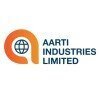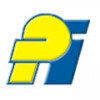
i
Deccan Fine
Chemicals
Filter interviews by
Deccan Fine Chemicals Interview Questions and Answers
76 Interview questions
DCS stands for Distributed Control System, used for controlling complex processes in various industries.
DCS is commonly used in manufacturing, power generation, and chemical processing.
It allows for centralized control of multiple processes across different locations.
DCS systems improve efficiency and safety by providing real-time monitoring and control.
An example of DCS application is in oil refineries, where it ...
PLC stands for Programmable Logic Controller, used for automation in industrial processes.
PLCs are used in manufacturing for controlling machinery and assembly lines.
They can automate processes like bottling, packaging, and material handling.
Example: A PLC can control the temperature and pressure in a chemical plant.
PLCs are also used in building automation for HVAC systems and lighting control.
Example: A PLC can ...
Instrumentation involves various tools for measuring and controlling physical quantities in engineering and industrial applications.
1. Pressure Gauges: Used to measure the pressure of gases and liquids, e.g., Bourdon tube gauge.
2. Flow Meters: Instruments that measure the flow rate of liquids or gases, e.g., electromagnetic flow meter.
3. Temperature Sensors: Devices like thermocouples and RTDs that measure tempera...
PLC (Programmable Logic Controller) is for discrete control, while DCS (Distributed Control System) is for continuous processes.
PLC is typically used in manufacturing for automation tasks, e.g., assembly lines.
DCS is used in large-scale processes like oil refineries or chemical plants.
PLCs are designed for fast response times and are ideal for simple control tasks.
DCS provides centralized control and monitoring of...
Protocols in industries ensure standardized communication and processes for efficiency and safety.
TCP/IP: Used for internet communication, enabling data transfer between devices.
HTTP/HTTPS: Protocols for web communication, ensuring secure data exchange.
FTP: File Transfer Protocol, used for transferring files between computers.
MQTT: Lightweight messaging protocol for IoT devices, enabling efficient communication.
Mo...
Flow controlling devices regulate the flow of fluids in systems, ensuring optimal performance and safety in various applications.
Valves: Devices like gate valves, ball valves, and butterfly valves control the flow of liquids and gases in pipelines.
Flow Meters: Instruments such as turbine flow meters and electromagnetic flow meters measure the flow rate of fluids in a system.
Pumps: Centrifugal and positive displace...
Interlocks are safety mechanisms designed to prevent unsafe operations in systems by controlling access and actions.
Safety Interlocks: These are used in machinery to ensure that certain conditions are met before operation, such as a door being closed before a machine starts.
Electrical Interlocks: In electrical systems, interlocks can prevent the operation of one device if another device is in operation, ensuring s...
Precautions during batch charging ensure safety, quality, and efficiency in chemical production processes.
Ensure proper PPE (Personal Protective Equipment) is worn, such as gloves and goggles, to protect against chemical exposure.
Verify the compatibility of materials being charged to prevent reactions that could lead to hazards.
Check equipment for cleanliness and functionality to avoid contamination and ensure acc...
Mapping equipment involves identifying, categorizing, and documenting tools for efficient management and usage.
Identify all equipment types (e.g., machinery, tools, instruments).
Categorize equipment based on function (e.g., electrical, mechanical).
Document specifications like model, serial number, and location.
Use software tools for tracking and mapping (e.g., CMMS).
Regularly update the mapping to reflect new acqu...
P&ID (Piping and Instrumentation Diagram) is a detailed graphical representation of a process system.
Understand symbols: Familiarize yourself with standard symbols for valves, pumps, and instruments.
Identify flow direction: Arrows indicate the direction of fluid flow in the system.
Read equipment tags: Each piece of equipment has a unique tag that provides information about its function.
Check connections: Look ...
Deccan Fine Chemicals Interview Experiences
88 interviews found
I applied via Referral and was interviewed in Nov 2023. There were 3 interview rounds.

(5 Questions)
- Q1. Diatillation column and type
- Q2. Evaporators and all laws
- Q3. Heat exchangers and types
- Ans.
Heat exchangers are devices used to transfer heat between two or more fluids.
Heat exchangers are commonly used in various industries such as power plants, chemical plants, and HVAC systems.
There are several types of heat exchangers including shell and tube, plate, and finned tube heat exchangers.
Shell and tube heat exchangers consist of a shell with multiple tubes inside, allowing one fluid to flow through the tubes wh...
- Q4. Extractor and types of pump and flow
- Ans.
Extractor is a device used to remove substances from a mixture. Types of pumps include centrifugal, reciprocating, and rotary pumps. Flow refers to the rate at which a fluid moves.
Extractor is commonly used in industries such as chemical, pharmaceutical, and food processing.
Centrifugal pumps are commonly used for low viscosity fluids, while reciprocating pumps are used for high pressure applications.
Flow can be measure...
- Q5. Thermal heat capcity boiling point
Economicall strength of india
Interview Preparation Tips
I appeared for an interview in Dec 2024.
(5 Questions)
- Q1. What is the working principle of shaft balancing in accordance with ISO 21940-11 and ISO 21940-12 standards?
- Ans.
Shaft balancing in accordance with ISO 21940-11 and ISO 21940-12 standards involves reducing vibrations by adjusting the mass distribution along the shaft.
Shaft balancing aims to minimize vibrations in rotating machinery by adjusting the mass distribution along the shaft.
ISO 21940-11 specifies the balancing process for rigid rotors, while ISO 21940-12 covers the balancing of flexible rotors.
Balancing involves adding or...
- Q2. What does equipment alignment entail?
- Ans.
Equipment alignment involves ensuring that all components of a machine are properly positioned and oriented to work efficiently and accurately.
Ensuring that all parts of the equipment are correctly positioned relative to each other
Checking and adjusting the alignment of shafts, belts, gears, and other components
Using precision tools such as laser alignment systems to achieve accurate alignment
Proper alignment helps pre...
- Q3. Following ASME section ix
- Q4. Following ASME section v
- Q5. Following ASME B31.3
Interview Preparation Tips
I appeared for an interview in Dec 2024.
(5 Questions)
- Q1. What is API STD 610
- Ans.
API STD 610 is a standard for centrifugal pumps for petroleum, petrochemical, and natural gas industries.
API STD 610 specifies requirements for centrifugal pumps used in the petroleum, petrochemical, and natural gas industries.
It covers design, materials, testing, and performance of centrifugal pumps.
The standard also includes guidelines for pump selection, installation, operation, and maintenance.
API STD 610 helps ens...
- Q2. Why are you use API 510
- Ans.
API 510 is used for pressure vessel inspection and maintenance in accordance with industry standards.
API 510 is a widely recognized standard for the inspection, repair, alteration, and rerating of pressure vessels.
It ensures that pressure vessels are maintained in a safe and reliable condition.
By following API 510 guidelines, maintenance engineers can ensure compliance with industry standards and regulations.
Using API ...
- Q3. What are you used fillar gauge
- Ans.
A filler gauge is a tool used to measure the gap between two objects.
Filler gauges are commonly used in maintenance to check clearances between parts
They are typically made of a set of thin metal blades of varying thickness
The user selects the appropriate blade that fits snugly in the gap being measured
Filler gauges are useful for ensuring proper tolerances in machinery and equipment
- Q4. How many are you being least count diameter
- Ans.
The least count diameter refers to the smallest increment that can be measured on a diameter scale.
Least count diameter is the smallest division that can be measured on a diameter scale.
It is typically determined by the precision of the measuring instrument being used.
For example, if a micrometer has a least count of 0.01 mm, it means that it can measure diameter increments in 0.01 mm intervals.
- Q5. How many are you parts bearing
- Ans.
I am responsible for maintaining and repairing various parts in the machinery and equipment.
I am familiar with the different types of bearings used in machinery such as ball bearings, roller bearings, and sleeve bearings.
I have experience in troubleshooting and replacing faulty bearings to ensure smooth operation of the equipment.
I work closely with the procurement team to ensure we have an adequate supply of bearings ...
I applied via Newspaper Ad
(2 Questions)
- Q1. Chemical plant Electrical Related
- Q2. All over Electrical maintenance supervisor relative
Interview Preparation Tips
I applied via Walk-in and was interviewed in Nov 2024. There was 1 interview round.
(3 Questions)
- Q1. Hard work done as helper
- Q2. Yes can u as helper
- Q3. Treat like grammar
Interview Preparation Tips
I applied via Approached by Company and was interviewed in Aug 2024. There was 1 interview round.
(5 Questions)
- Q1. What are you bearing
- Q2. What are you mechanical seal
- Ans.
Mechanical seals are devices that help prevent leakage between two surfaces in relative motion.
Mechanical seals are commonly used in pumps, compressors, and other rotating equipment to prevent leakage of fluids.
They consist of two main parts - a stationary element and a rotating element, which are held together by tension to create a seal.
The seal faces are typically made of materials like carbon, ceramic, or tungsten ...
- Q3. How much are bearing parts
- Ans.
The cost of bearing parts can vary depending on the type, size, and quality of the bearing.
Bearing parts can range from a few dollars to hundreds of dollars, depending on the specific requirements.
Factors such as material, size, precision, and brand can all impact the cost of bearing parts.
For example, a standard ball bearing for a small appliance may cost around $5, while a high-precision ceramic bearing for a special...
- Q4. What are the predictive maintenance
- Ans.
Predictive maintenance involves using data and analytics to predict when equipment failure may occur, allowing for timely maintenance to prevent breakdowns.
Uses data and analytics to predict when equipment failure may occur
Helps in scheduling maintenance activities before breakdowns occur
Reduces downtime and increases equipment reliability
Examples include vibration analysis, oil analysis, and thermography
- Q5. What are you use ISO 28721-1.2019 code
- Ans.
ISO 28721-1.2019 is a code used for establishing a framework for implementing reliability-centered maintenance (RCM) in engineering.
ISO 28721-1.2019 provides guidelines for developing maintenance strategies based on reliability-centered maintenance principles.
It helps in identifying the most effective maintenance tasks to ensure equipment reliability and safety.
The code outlines the process of analyzing potential failu...
(2 Questions)
- Q1. Chennai basics &
- Q2. Mass transfer & Heat transfer
(1 Question)
- Q1. What is PRA and how to do the PRA.
- Ans.
PRA (Probabilistic Risk Assessment) evaluates risks in processes to enhance safety and reliability.
Identify hazards: Determine potential hazards in the process, such as chemical spills or equipment failures.
Analyze scenarios: Use techniques like Fault Tree Analysis (FTA) or Event Tree Analysis (ETA) to assess failure scenarios.
Quantify risks: Calculate the likelihood and consequences of identified scenarios to prioriti...
Interview Preparation Tips
I appeared for an interview in May 2025, where I was asked the following questions.
- Q1. Glass lined reactor shaft run out
- Ans.
Glass lined reactor shaft run out refers to the misalignment or wobbling of the reactor shaft, affecting performance and safety.
Run out can lead to uneven wear on the glass lining, increasing the risk of damage.
Regular maintenance checks can help identify shaft run out early.
Using precision alignment tools can minimize run out during installation.
Example: A reactor with a 0.5 mm run out may cause significant operationa...
- Q2. Glass lined reactor spark test value
- Ans.
The spark test value for glass lined reactors ensures electrical safety and integrity of the lining.
The spark test typically involves applying a high voltage (e.g., 5000V) to check for insulation failure.
A successful test indicates that the glass lining is intact and can prevent contamination.
If the test fails, it may indicate cracks or defects in the glass lining, requiring repair or replacement.
Regular spark testing ...
Production Graduate Engineer Trainee Interview Questions & Answers
posted on 16 Sep 2024
(2 Questions)
- Q1. Sepatation technics
- Q2. How to calculate number of theotitical plates
- Ans.
Number of theoretical plates can be calculated using the plate theory or the distillation column design equation.
The plate theory method involves using the equilibrium data for the components being separated and the operating conditions of the column.
The distillation column design equation method involves using the height equivalent to a theoretical plate (HETP) and the total number of plates in the column.
Example: For...
I applied via Company Website and was interviewed in Jun 2024. There were 2 interview rounds.
(2 Questions)
- Q1. What is favourite subject
- Ans.
My favorite subject is Chemical Engineering, as it combines principles of chemistry, physics, and mathematics to solve real-world problems.
Chemical Engineering involves designing processes for large-scale production, such as creating pharmaceuticals.
It requires a strong understanding of thermodynamics, which is crucial for energy efficiency in processes.
I enjoy the challenge of optimizing processes to reduce waste and ...
- Q2. How inter related to pratical knowledge and theoretical knowledge
- Ans.
Practical and theoretical knowledge are interconnected, enhancing understanding and application in engineering processes.
Theoretical knowledge provides the foundational principles, such as thermodynamics in process engineering.
Practical knowledge involves hands-on experience, like operating machinery or conducting experiments.
Both types of knowledge are essential for problem-solving; for example, applying theoretical c...
(2 Questions)
- Q1. BRIEFLY EXPLAIN Ur family details
- Q2. Why did you here
- Ans.
I am here to leverage my skills in process optimization and contribute to innovative engineering solutions.
I have a strong background in chemical engineering, which equips me to analyze and improve processes effectively.
In my previous role, I successfully reduced production costs by 15% through process optimization.
I am passionate about sustainability and have implemented eco-friendly practices in past projects.
I thriv...
Interview Preparation Tips
Top trending discussions






Deccan Fine Chemicals Interview FAQs
Some of the top questions asked at the Deccan Fine Chemicals interview -
The duration of Deccan Fine Chemicals interview process can vary, but typically it takes about less than 2 weeks to complete.
Tell us how to improve this page.
Deccan Fine Chemicals Interviews By Designations
- Deccan Fine Chemicals Process Engineer Interview Questions
- Deccan Fine Chemicals Operations Engineer Interview Questions
- Deccan Fine Chemicals Graduate Trainee Interview Questions
- Deccan Fine Chemicals Graduate Engineer Trainee (Get) Interview Questions
- Deccan Fine Chemicals Junior Engineer Interview Questions
- Deccan Fine Chemicals Senior Engineer Interview Questions
- Deccan Fine Chemicals Maintenance Engineer Interview Questions
- Deccan Fine Chemicals Shift Engineer Interview Questions
- Show more
Interview Questions for Popular Designations
Overall Interview Experience Rating
based on 105 interview experiences
Difficulty level
Duration
Interview Questions from Similar Companies
Deccan Fine Chemicals Reviews and Ratings
based on 902 reviews
Rating in categories
|
Junior Engineer
381
salaries
| ₹2.2 L/yr - ₹6 L/yr |
|
Process Engineer
160
salaries
| ₹3.2 L/yr - ₹7.2 L/yr |
|
Senior Executive
153
salaries
| ₹4.7 L/yr - ₹10.2 L/yr |
|
Engineer
129
salaries
| ₹3 L/yr - ₹6.2 L/yr |
|
Senior Chemist
119
salaries
| ₹3 L/yr - ₹6.3 L/yr |

Aarti Industries

UPL

Coromandel International

PI Industries
- Home >
- Interviews >
- Deccan Fine Chemicals Interview Questions












